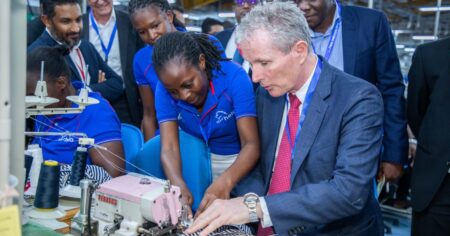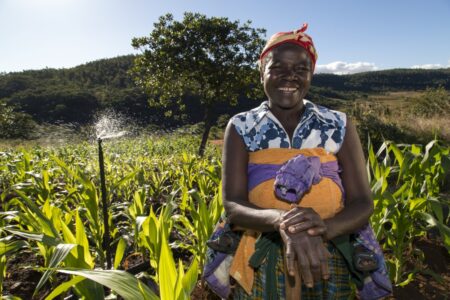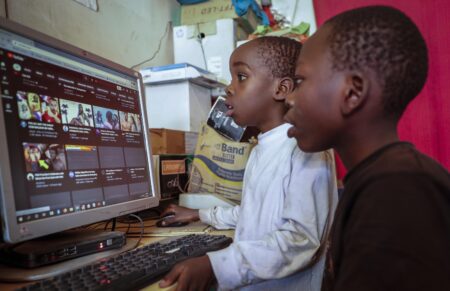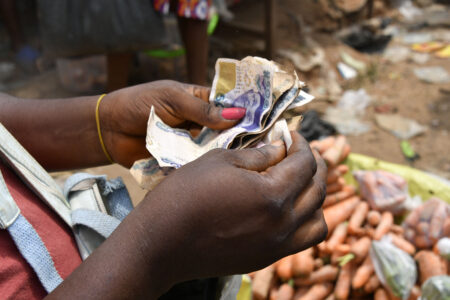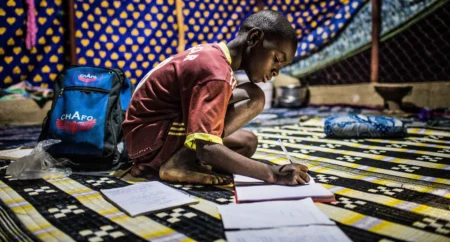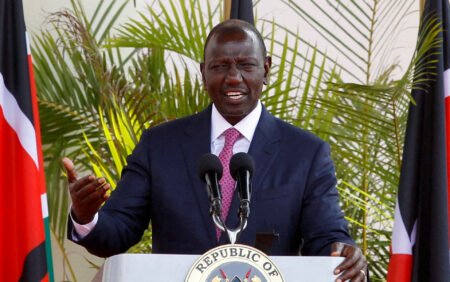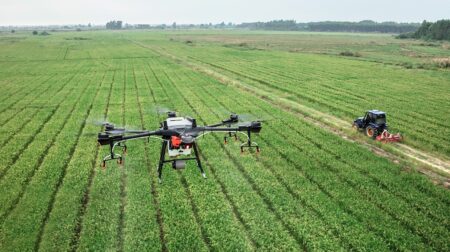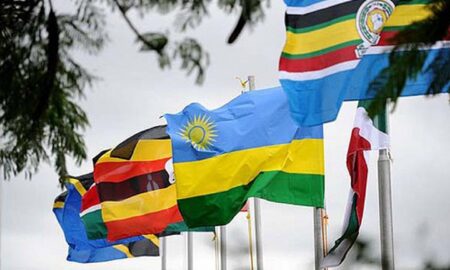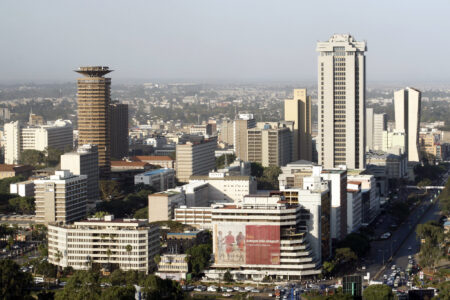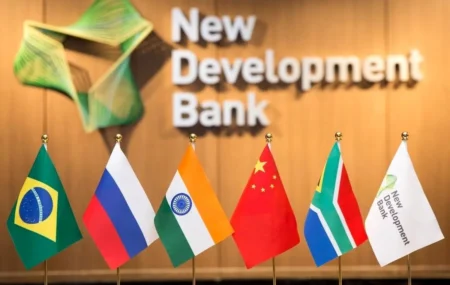- Africa’s new dawn: the rising role of digital and AI in agriculture
- Can Dangote Refinery Transform Africa Energy Ambition
- Gallup Survey: 80 per cent of Kenyan Workers Are Disengaged and Seek New Opportunities
- Madagascar Man Freed from 5KG Tumor After 15-Year Struggle
- How women in Africa are perceived and treated
- Sugar consumption in Kenya to Increase to 1.23 Million Tonnes
- Can Somalia and Turkey Oil deal Bring Change in Somaliland
- Remittances to Kenya dropped to $371.6 million in June, marking a six month low
Browsing: World Bank
- Kenya’s private sector enjoyed a much more stable business environment in April amid continued job creation in the market, with the country enjoying the lowest inflation in two years.
- Employment growth continues as the country’s economy remains on a growth trajectory.
- The headline PMI registered fractionally above the 50.0 neutral mark at 50.1 in April, up from 49.7 in March.
Kenya’s private sector enjoyed a much more stable business environment in April amid continued job creation in the market, with the country enjoying the lowest inflation in two years.
The latest Purchasing Managers’ Index by Stanbic Bank depicted broadly steady operating conditions across the sector during the month, as order book volumes and output levels have changed little since March.
The 12-month outlook continued to rebound sharply from February’s record low, and employment growth was maintained, as the country’s economy remained on a growth trajectory.
World Bank has projected Kenya’s …
- Africa’s food and agriculture market could reach $1 trillion in 2030 from $280 billion in 2023, with over $60 billion spent on food imports yearly.
- Access to credit poses a significant barrier to private sector investment in Africa’s agriculture sector
- Food and Agriculture Organization (FAO) highlights that around 30 to 40 per cent of food produced in Africa is lost before it reaches consumers.
Africa is a sleeping giant, at least from the agricultural sector. The region’s food and agriculture market could reach $1 trillion from $280 billion in 2023, with over $60 billion spent on food imports yearly.
The numbers in the latter are self-explanatory agriculture in Africa is not only a staple economic activity for most of the population but the region at large.
However, the sector is faced with both promising leads of growth but, at the same time, hurdles, including lack of proper funding leading to …
- Market size of Africa’s digital economy could reach $712 billion by 2050.
- In 2022 only 36 percent of the African population had access to broadband internet.
- Mobile Network Operators (MNOs) are streamlining adoption of 5G services.
Africa is on the verge of an economic revolution. From the north to the southern part of the Saharan desert, nations are striving to eliminate poverty and gain a strong foothold in global markets.
In the same vein, the continent is banking on the potential held by the digital economy. Reports ping the sector to higher standards, including a report from non-profit Endeavor predicting that the market size of Africa’s digital economy could reach $712 billion by 2050.
The growth is propelled by the massive engagement of the continent’s younger population, rising smartphone adoption and increasing internet penetration.
Read also: World Bank backs Smart Africa’s Digital Academy with $20M grant
Digital economy in
…- There is a debt crisis in Africa as countries struggle to repay international loans.
- According to the World Bank, nine African countries entered 2024 in debt distress, with another 15 at high risk of distress and 14 more categorised as moderate risk.
- According to the United Nations, Africa’s public debt will stay above pre-pandemic levels in 2024 and 2025.
At 4 per cent, Africa is projected to be the second fastest-growing economic region in the world in 2024, according to a report by the International Monetary Fund (IMF). However, behind the headline figure is a less optimistic reality.
Many African countries have suffered from slow post-COVID-19 recovery, climate change shocks, worsening food security situation, political instability, weak global growth, and high-interest rates. These economic shocks have pushed over 55 million people into poverty since 2020. The situation is increasingly alarming as more than half of the continent’s countries are in …
- Energy experts warn that the shortages that plague Africa’s electricity access in 2024 will have a significant drain on the continent’s economic growth.
- World Bank will connect 300 million Africans to electricity with a $35 billion plan.
- Africa is poised to adapt to transformative advancements that will reshape the landscape of energy access, storage, and connectivity across the continent.
Africa remains the most energy-deficient continent, with approximately 75 per cent of its population lacking access to electricity. As of 2021, 43 per cent of Africans, roughly 600 million people, were without electricity access, with 590 million in sub-Saharan Africa. Consequently, nearly half of the continent’s population is unable to use basic electrical appliances.
Despite improvements in electricity access in sub-Saharan Africa, where 49.4 per cent of the population had access in 2022, up from 33 per cent in 2010, electricity consumption has not seen a corresponding increase. The persistent lack …
- Kenya’s economic resurgence in 2024 proving a reality following a notable upturn in recent months, marked by positive indicators across sectors.
- According to CBK, leading indicators point to the continued strong performance of the Kenyan economy in the first quarter of 2024.
- According to the World Bank, Kenya’s economic growth is projected to be 5.2 per cent, boosted by increased investment in the private sector as the government reduces its activities in the domestic credit market.
A strong rebound
Kenya’s economic prospects are looking brighter, attributed to the interventions by the World Bank and the International Monetary Fund, which have played a massive role in easing volatility witnessed less than three months ago.
Major economic indicators in the country show that confidence is slowly creeping back after the government secured the International Monetary Fund’s facility to pay back the Eurobond.
The repayments had triggered volatility in financial markets, including the …
Africa’s agritech potential is immense. Agriculture can help solve various issues, including food security, poverty reduction, and economic transformation. However, technology is needed to revolutionise agriculture and solve farming and agricultural challenges.…
- East Africa’s economic growth is projected to grow at 5.3 and 5.8 per cent in 2024 and 2025-26, respectively.
- The World Bank projects African economies to grow by 3.4 per cent in 2024.
- However, faster and more equitable growth is needed to reduce poverty.
East Africa’s economic growth to lead the continent
Economies in East Africa are expected to spearhead growth in Sub-Saharan Africa this year amid increased private consumption and declining inflation, which are supporting an economic rebound in the region.
The World Bank’s latest Africa’s Pulse report indicates the East African Community is projected to grow at the fastest pace at 5.3 and 5.8 per cent in 2024 and 2025–2026, respectively, thanks to robust growth in the Democratic Republic of Congo, Kenya, Rwanda, and Uganda.
This is higher than the compounded growth for Sub-Sahara Africa, which, albeit rebounding from a low of 2.6 per cent in 2023, is …
- Kenya’s business conditions weakened slightly in March despite easing inflation.
- Kenyan firms reduced their purchases of inputs in line with weaker sales.
- Most businesses remain optimistic about their workforce size and revenue growth in the year’s second quarter (April-June).
The latest Stanbic Bank Kenya Purchasing Managers’ Index indicates that Kenya’s business conditions weakened slightly in March despite easing inflation.
The deterioration in operating conditions was witnessed across the private sector as order book volumes and output levels contracted. The downturn contrasted with February, which saw an improvement in the private sector for the first time in six months.
Despite the decline, the survey data provided some positive signals for Kenyan businesses. Staffing and inventories showed further growth, indicating potential expansion opportunities.
Additionally, input cost inflation slowed to its lowest level in over three years amid a recovery in the shilling against the US dollar and other major currencies, including those …
asu football jersey
asu football jersey
Ohio State Team Jersey
custom football jerseys
49ers jersey
College Football Jerseys
johnny manziel jersey
Florida state seminars jerseys
asu football jersey
Florida State Seminars jerseys
fsu football jersey
ohio state jersey
ohio state jersey
College Football Jerseys
- The BRICS-owned New Development Bank (NDB) was established in 2015 by Brazil, Russia, India, China, and South Africa.
- The multilateral lender plans to disburse about $5 billion in loans this year.
- The bank has an initial verified capital of $100 billion and a subscribed capital of $50 billion.
Emerging economies could give the superpowers a run in the lending sector with the the BRICS alliance planning to disburse about $5 billion in loans this year. This was announced by the bloc’s New Development Bank (NDB) Vice President Zhou Qiangwu on Tuesday, March 26.
As China, one of Africa’s closest trade partners, experiences …





